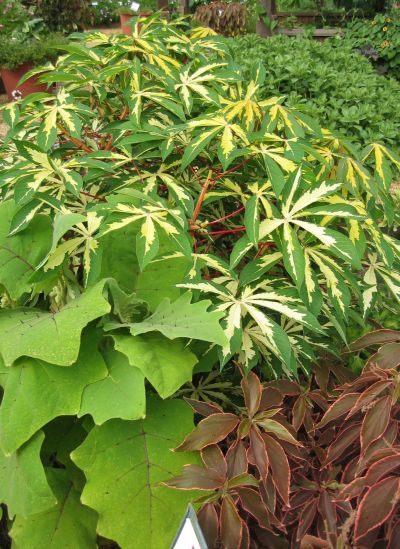Let me tell you something you already know. If you grow something in your own garden you’ll know exactly what poisons were or weren’t put on it, how much fertilizer was used, and furthermore it will taste better.
If you buy your apples from the guy down the street who you’ve known for 20 years you’ll be able to ask him what he used to grow the crop, why he used it, and you’ll have the satisfaction of supporting a local industry. And yes, those apples will taste better than grocery store apples.
If you go to a farmers market you’ll be able to ask the people there exactly what they did to their crops, and why they did what they did. And you’ll feel good about supporting the local economy. And yes, the food will taste better than anything from the grocery store.
If you walk into a grocery store or Target, or Kmart or whatever and pull a fruit or vegetable off the shelf which has the USDA Organic Label on it and say to yourself “Hey, I’m doing something good for my family and the environment” then, in my opinion, you’re fooling yourself.
There, I said it. I believe that, AS USDA ORGANIC CERTIFICATION NOW EXISTS, the USDA Certified Organic label does not provide a significant indicator that the fruit or veggies you’re buying provide a significant benefit in terms of human or environmental health. Please note that I’m not saying anything different than our government does – what they say is: “Organic is a labeling term that indicates that the food or other agricultural product has been produced through approved methods that integrate cultural, biological, and mechanical practices that foster cycling of resources, promote ecological balance, and conserve biodiversity.”
Notice that they never say that organic is superior to conventional production, simply that organic uses practices that “foster cycling of resources, promote ecological balance, and conserve biodiversity”. Though many of you may not believe it, conventional growing uses many of these practices too – producers know that if they don’t pay at least some attention to sustainability then they will lose money over time.
So why am I talking about this today? Well, I’ve had a few requests to discuss that new meta-study that came out a few weeks ago which showed that organic food has the same nutritional value as food produced conventionally. Big deal. Plenty of other meta studies have shown essentially the same thing –the quality of organic is LARGELY the same as conventional with a few nutrients (often vitamin C) a little higher in organic and a few (often protein levels) being higher in conventional. Anyway, to make a long story short, I don’t know why this study got more press – maybe they have better PR people at Stanford where the study was put together.
Look, the reason that one food has more nutrients than another has much more to do with the food itself than whether the food was grown organically or conventionally. No matter how you treat a McIntosh apple, it will never have as much vitamin C as a Granny Smith apple. Period. Folic acid will always be greater in bananas than grapes. Period. If you’re worried about getting enough of a particular nutrient then eat foods high in that nutrient. If you’re worried about a lot of nutrients then eat a varied diet.
Of course the study also says that synthetic pesticides are more likely to be on conventionally produced foods than organically produced foods. OK, I’ll buy that. Makes perfect sense….but tell me, how much organic pesticide is on organically produced foods? And how does it affect you? If a farmer uses spinosad, an insecticide used by organic growers, it can be present at low levels in food, as can other organic pesticides such as pyrethrum. But since residues of these organic pesticides are rarely tested you have no idea how much is in there.
Look, if you want to avoid pesticides on your fruits and veggies altogether and can’t grow a garden or go to a farmer’s market, then you should avoid foods where pesticides need to be used. These are the only foods where you can count on growers, organic or conventional, avoiding pesticides (No farmer WANTS to use pesticides – they’re expensive!). To find foods where pesticides are less likely to be used just go to that crazy dirty dozen list which the Environmental Working Group puts out (which I think is a bit ridiculous – but I’ll leave that alone for now since this post is getting long) and select fruits and veggies from the clean 15.
In terms of organic production being better for the environment, as long as organic growers can use copper to control diseases, I’m concerned about how long term applications of this copper will affect
620
soils on land devoted to organic production over the long term. I’m also concerned about fertilizer runoff and leaching in organic production – same as in conventional production. Nitrogen and phosphorus from manure can and do run off just the same as nitrogen and phosphorus from synthetic fertilizer.
In both conventional and organic systems, the impact that production has on the environment comes down to the responsibility that a given producer takes for doing the right thing and protecting the environment. To say otherwise is just silly. There is so much leeway in the USDA organic system that there is plenty of opportunity for a USDA organic producer to do things that will make their operation significantly worse for the environment than a conventional producer of the same crops.













